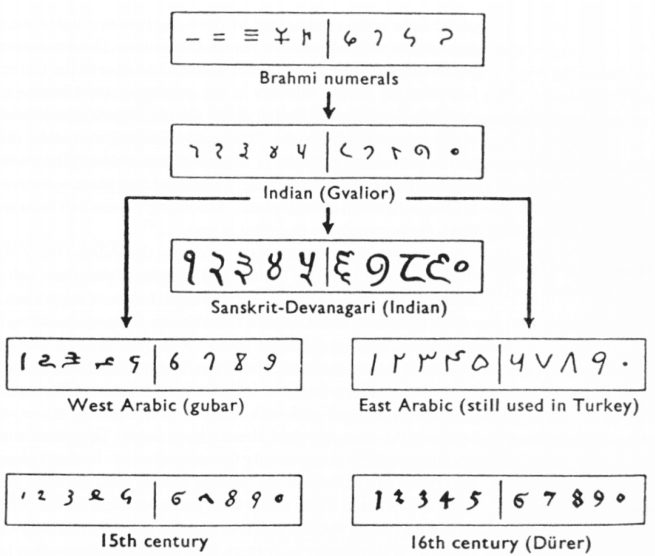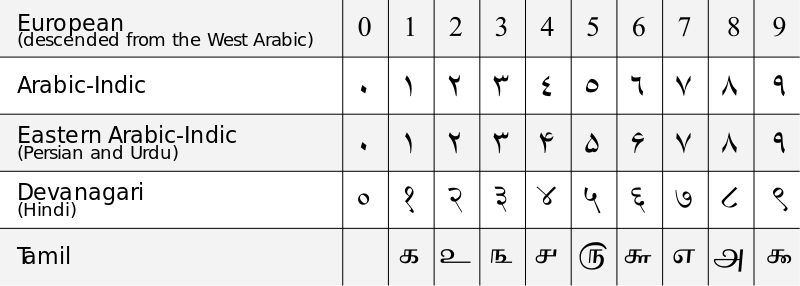Hindu-Arabic Number System
Even though most of us don't give it much thought, the development of the present number system was undoubtedly one of the most significant accomplishments in the history of mathematics. The decimal system, also known as base ten, employs the placements of the numerals to signify different powers of 10. While earlier versions of these systems did exist—for example, Roman numerals, which are also decimal-based but not positional—the majority of them were wildly impractical for a variety of reasons. Imagine performing routine computations using just Roman numerals.
Though in a slightly different form, the current number system, commonly known as the Hindu-Arabic Numeral System, has roots in India from the third century BC. A set of 10 digits, now known as Brahmi numerals, were somewhat different from contemporary numbers but employed the same decimal, positional system. Though a formalized version does not appear until the 4th century, during the rule of the Gupta Dynasty, we know that they were altered and incorporated into numerous number systems throughout the Indian subcontinent in the next decades.
The system then traveled to the Islamic civilisation, where it was improved upon and formally embraced around the ninth century. In Europe, where it swiftly supplanted the predominating Roman system, it gained popularity thanks to the writings of Islamic intellectuals like Al-Khwrizm and Al-Kindi. The Hindu-Arabic number system was the most widely used one in the known world by the 12th century.










